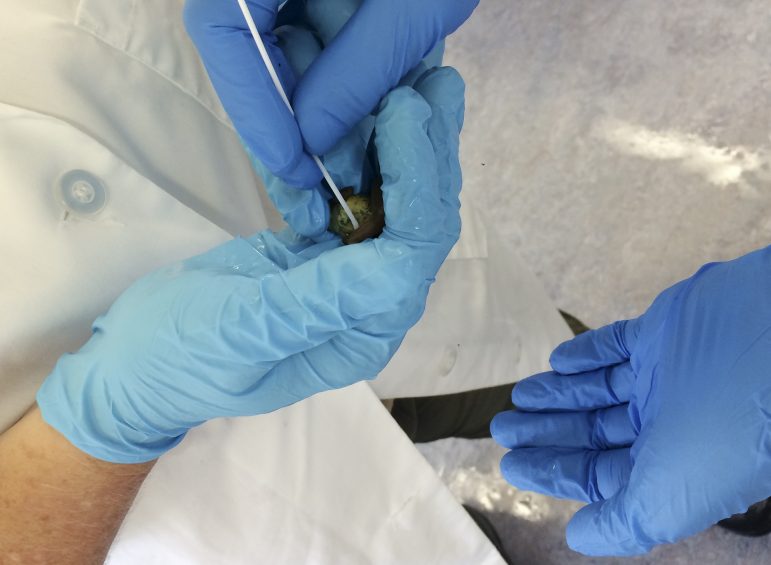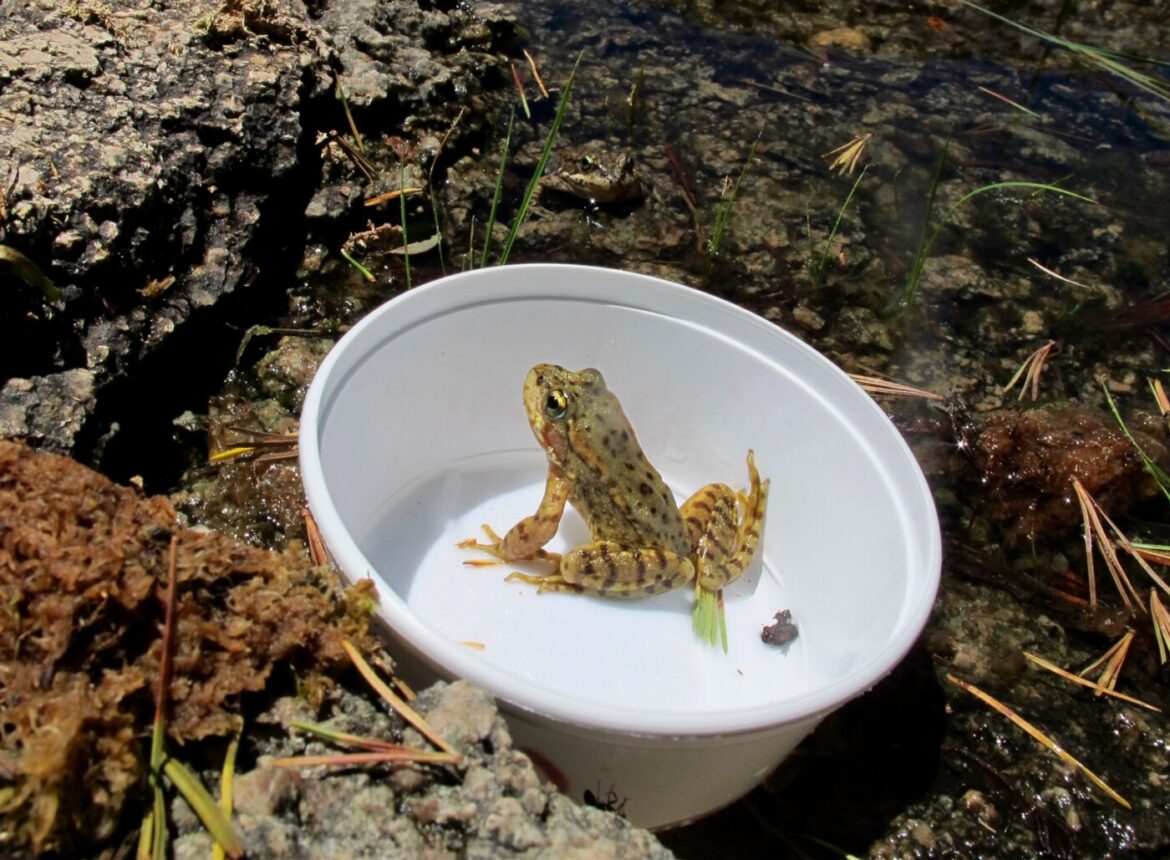Thirty-three Sierra Nevada Yellow-Legged frogs leapt into the wild Wednesday and Oakland Zoo officials hope they will help restabilize their species.
Frogs and other amphibians are being decimated across the world due to disease.
“It’s a global amphibian crisis,” Oakland Zoo spokeswoman Isabella Linares said.
The population of the Sierra Nevada Yellow-Legged Frog is rapidly declining, zoo officials said. So, the 33 frogs released into Sequoia and Kings Canyon National Parks will hopefully re-establish a healthy population.
The Sierra Nevada Yellow-Legged Frog is a “threatened” species.
Two things are threatening the population. Non-native fish are preying on the frogs and a disease caused by the chytrid fungus is killing them. Non-native fish have been introduced into lakes where the frogs live so people can fish recreationally. The disease caused by chytrid, a fungus that grows on the frogs’ skin, can kill a frog via cardiac arrest.
Wednesday’s release of the 33 frogs is the 18th such release by Oakland zookeepers. More than 600 frogs have been bred and put back into the wild. The breeding process begins when tadpoles are collected from the wild. Back at the zoo, the frogs are nurtured and given anti-fungal chytrid treatments to prevent the virus once they’re returned to their habitat.
The frogs are pit-tagged, which is like micro-chipping a dog or cat, treated again for chytrid and then readied for their flight to the wilderness.

Zoo officials said the process takes a year or two. Zoo staff work seven days a week, 365 days a year to care for the Sierra Nevada and two other yellow-legged frog species as well as Puerto Rican crested toads.
“What makes this effort so worthwhile is knowing that all of the hard work and countless hours we’ve invested here at the Zoo gives these frogs the best possible head start in hopefully ensuring that their populations in the wild will survive,” Samantha Sammons, conservation biologist at the Oakland Zoo, said in a statement.
At the end of the process, zoo officials hope they have released healthy frogs that are large enough to avoid being eaten and with immunity to the disease caused by chytrid.
On average, the cost to care for and treat 500 frogs at the zoo is $85,000, Linares said.
“The reintroduction efforts we have recently been conducting are one of the few tools currently available to try to recover these species,” Danny Boiano, aquatic ecologist at Sequoia and Kings Canyon National Parks, said in a statement.
